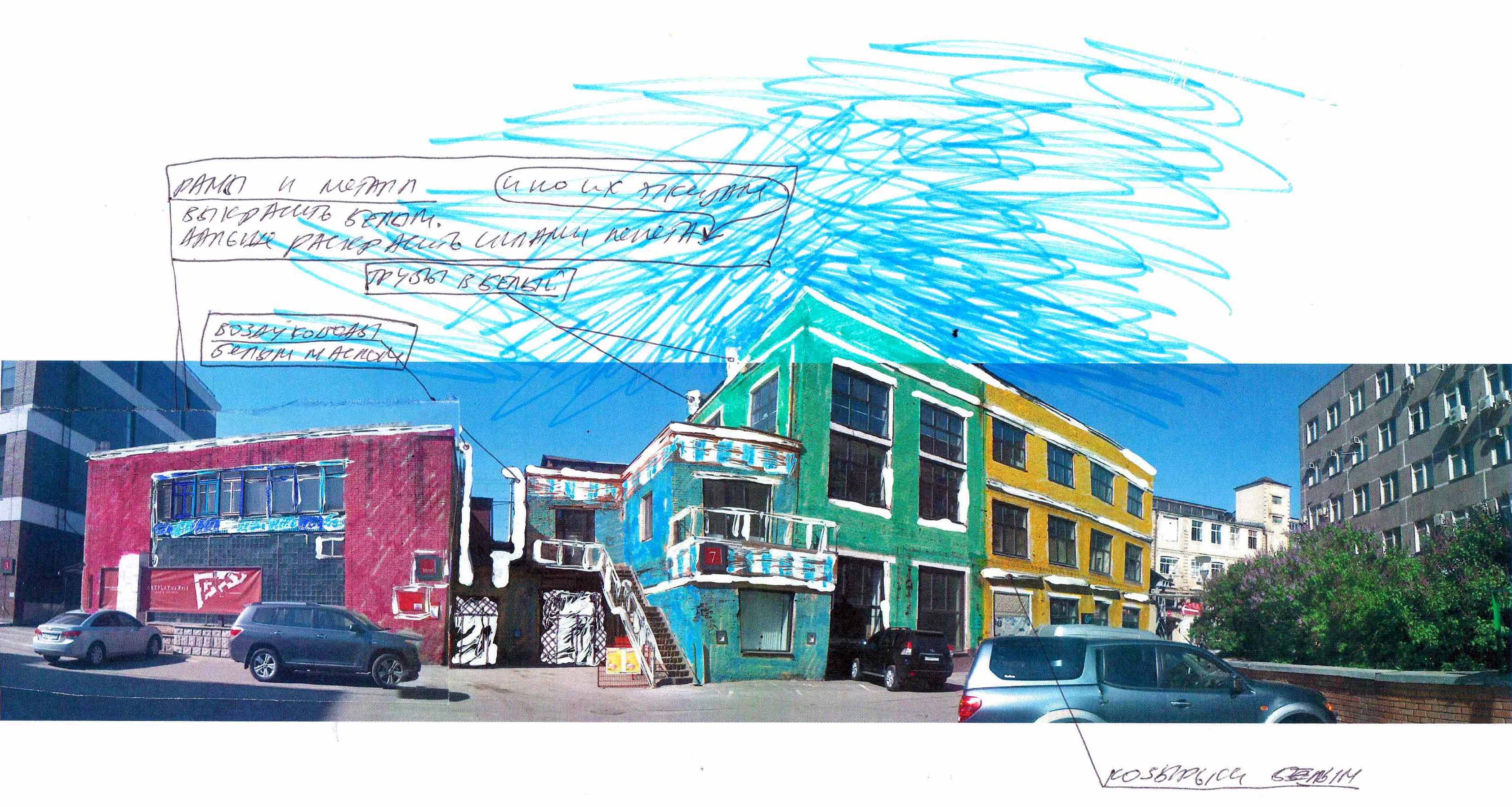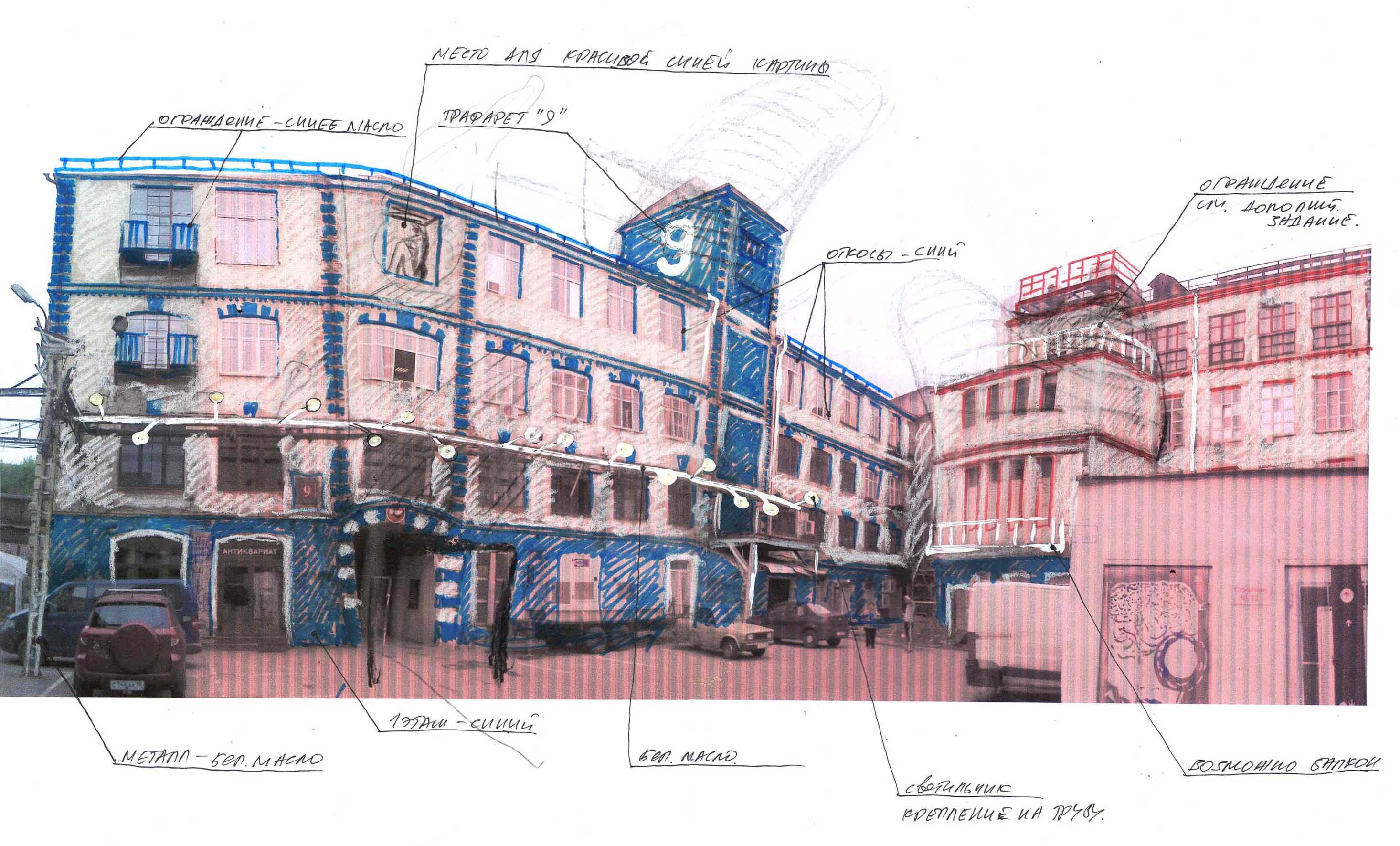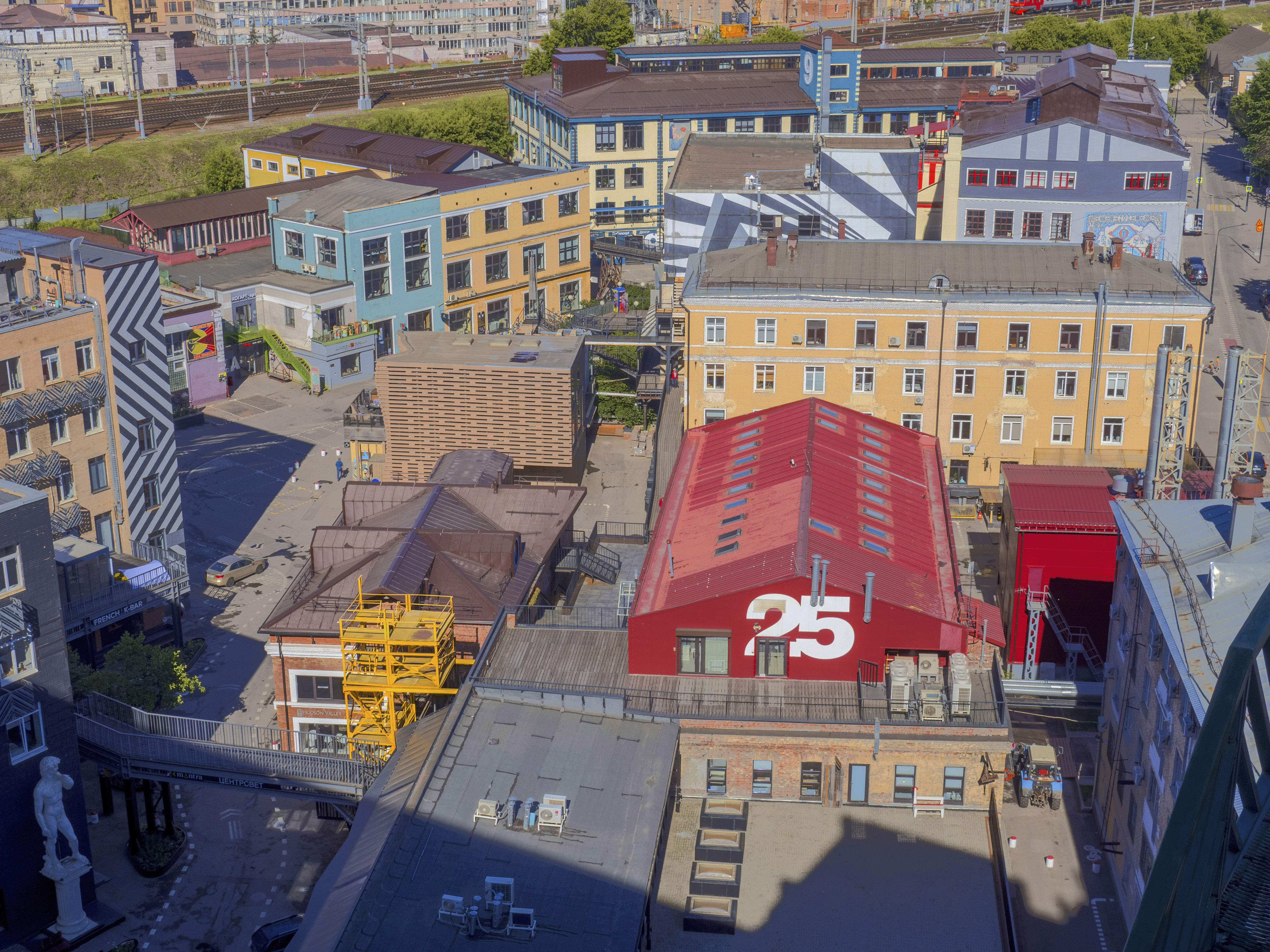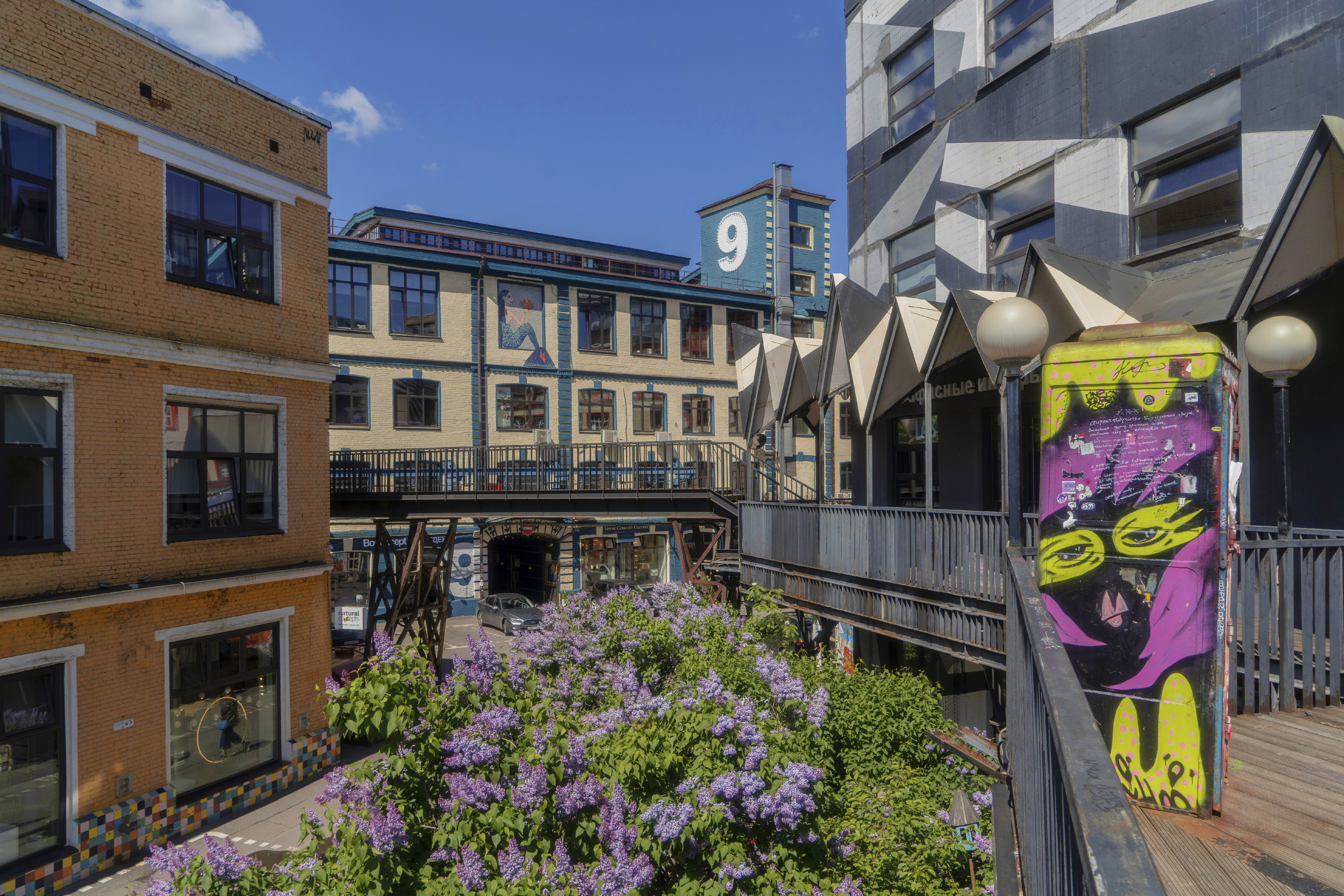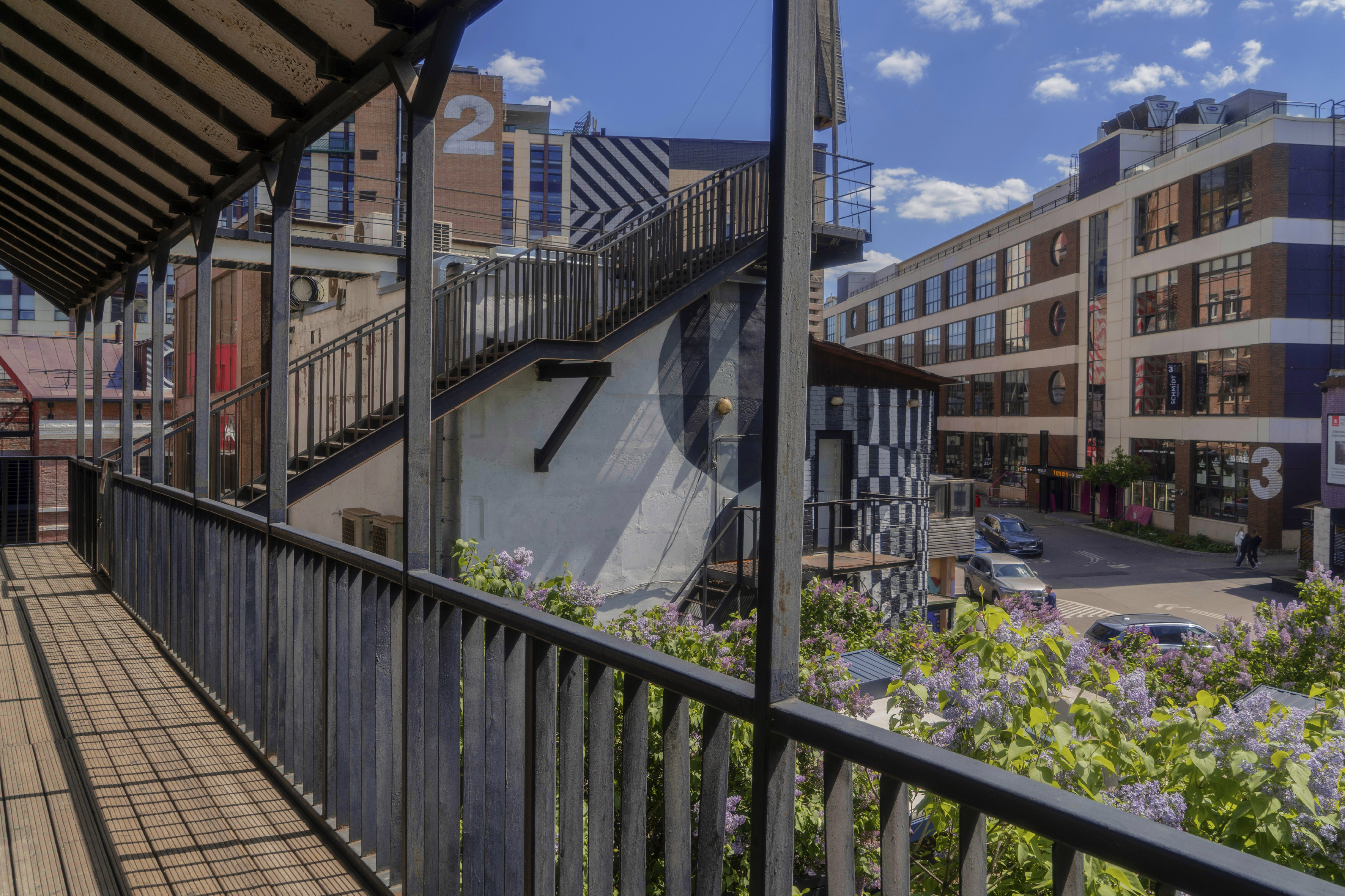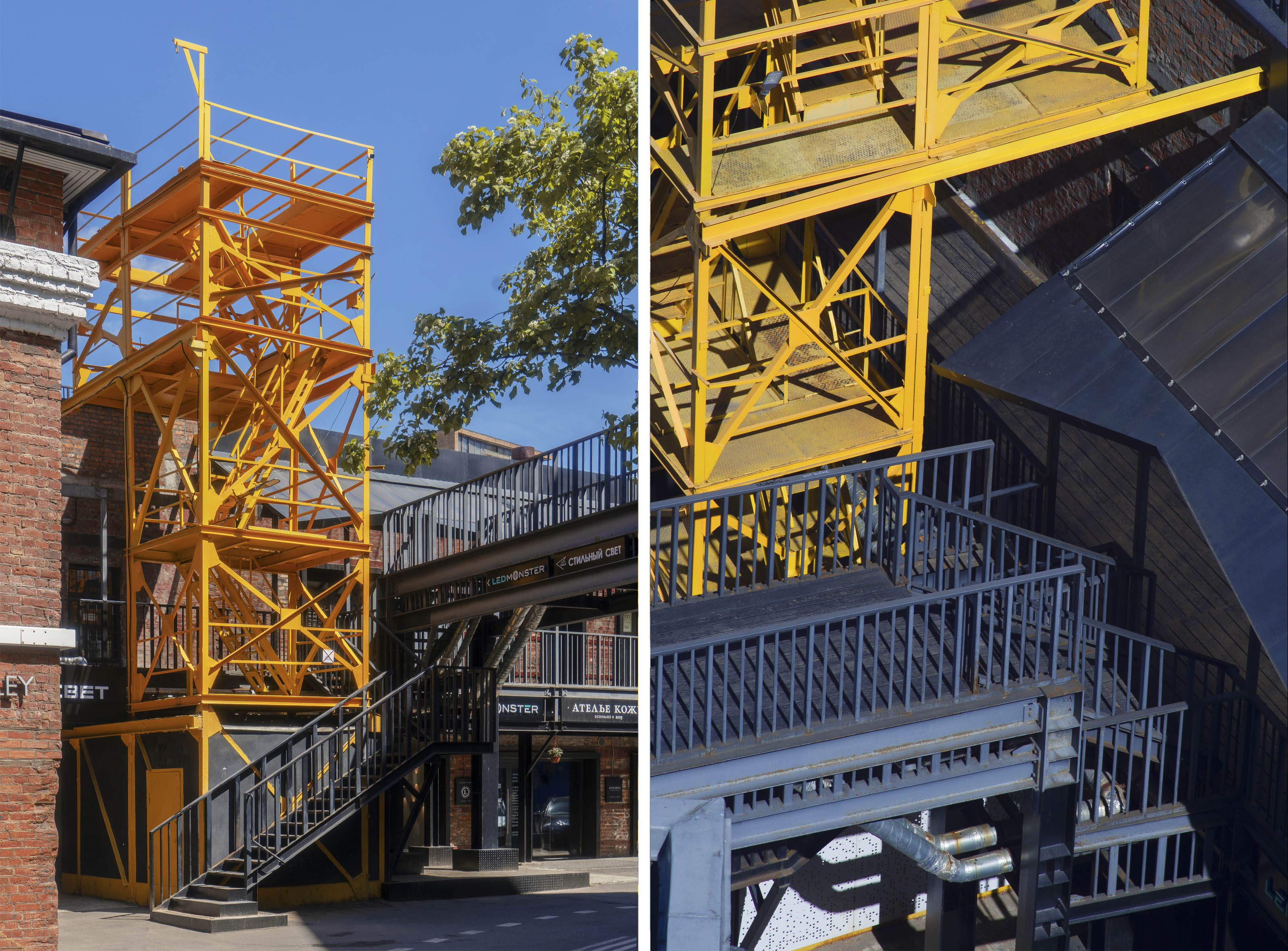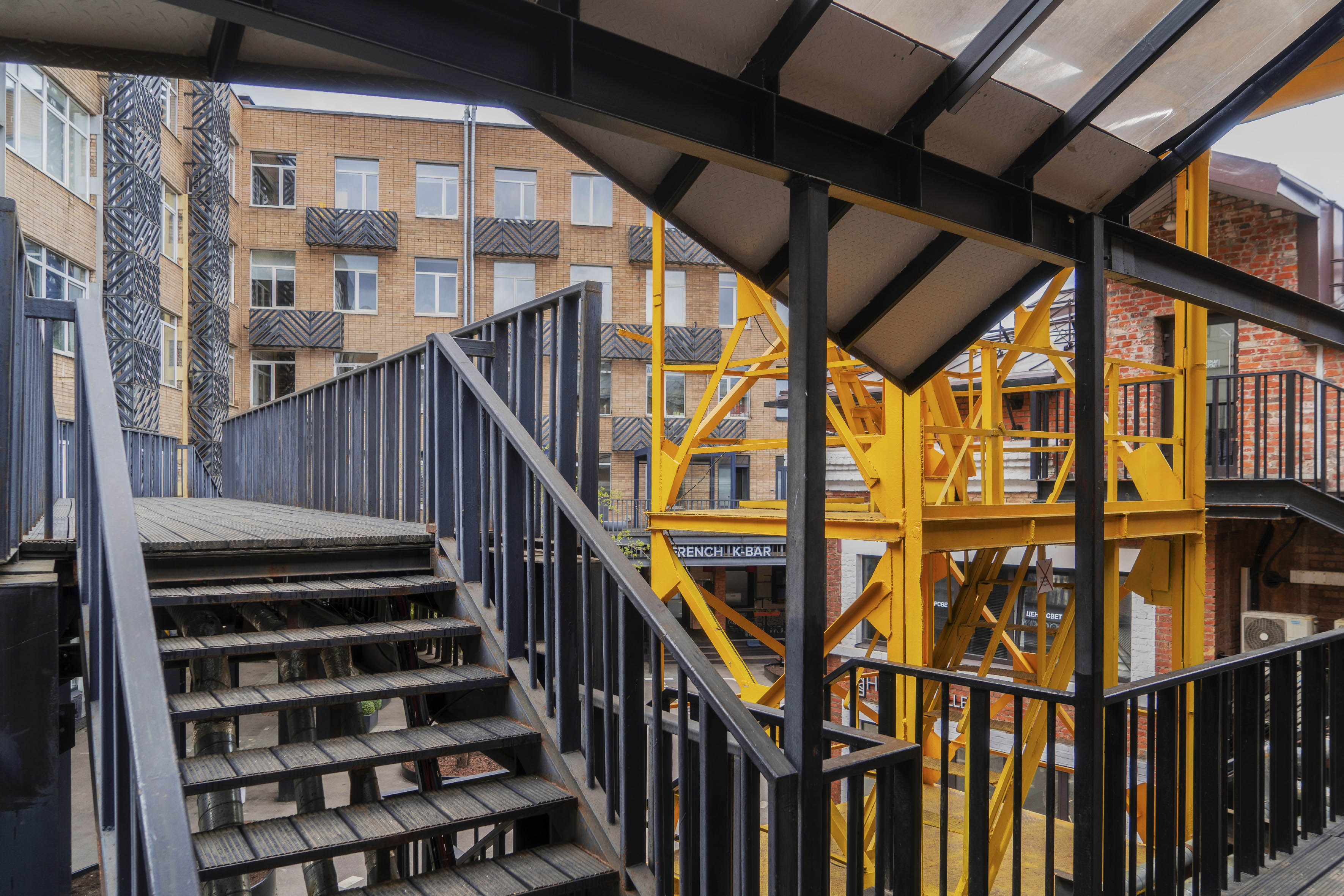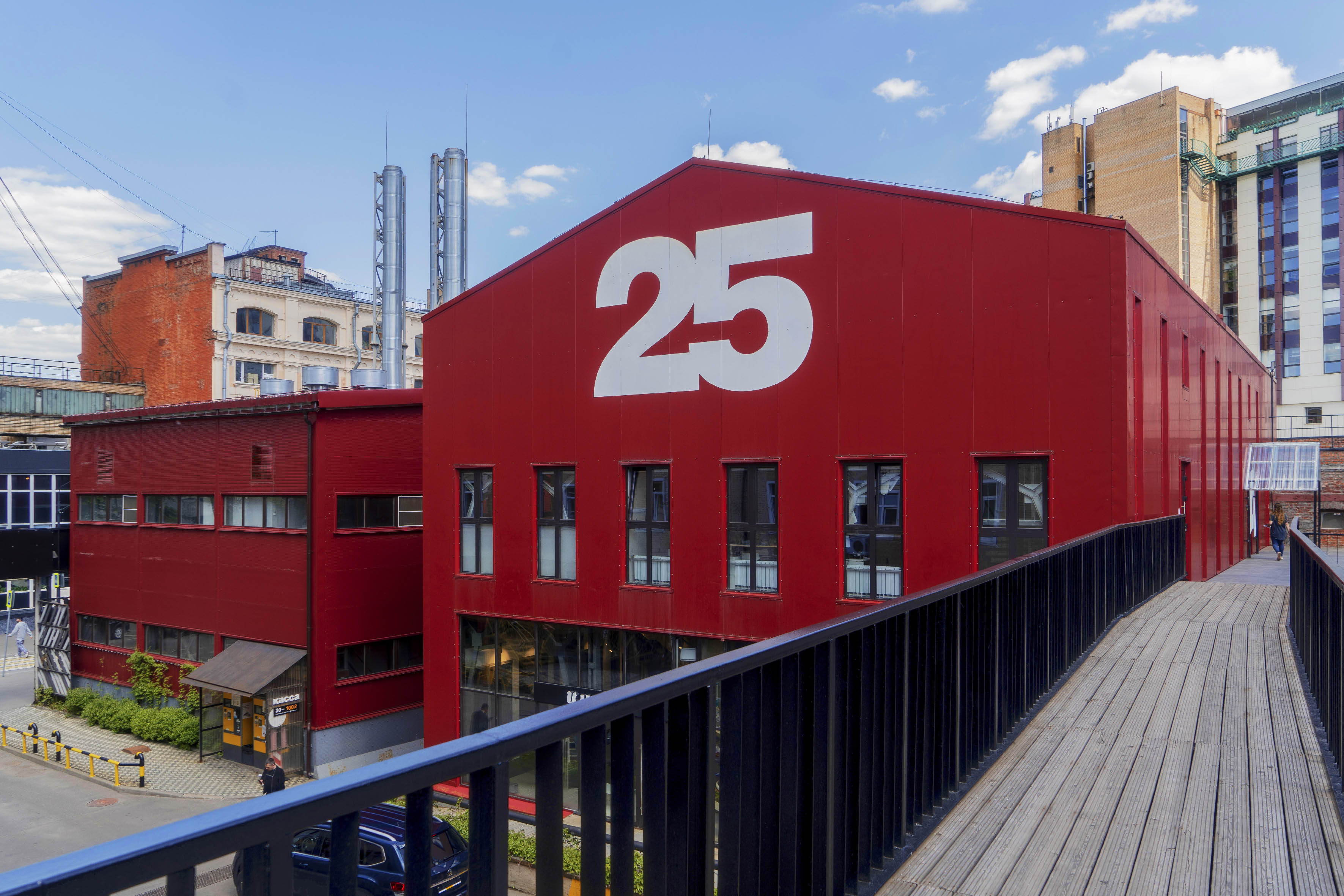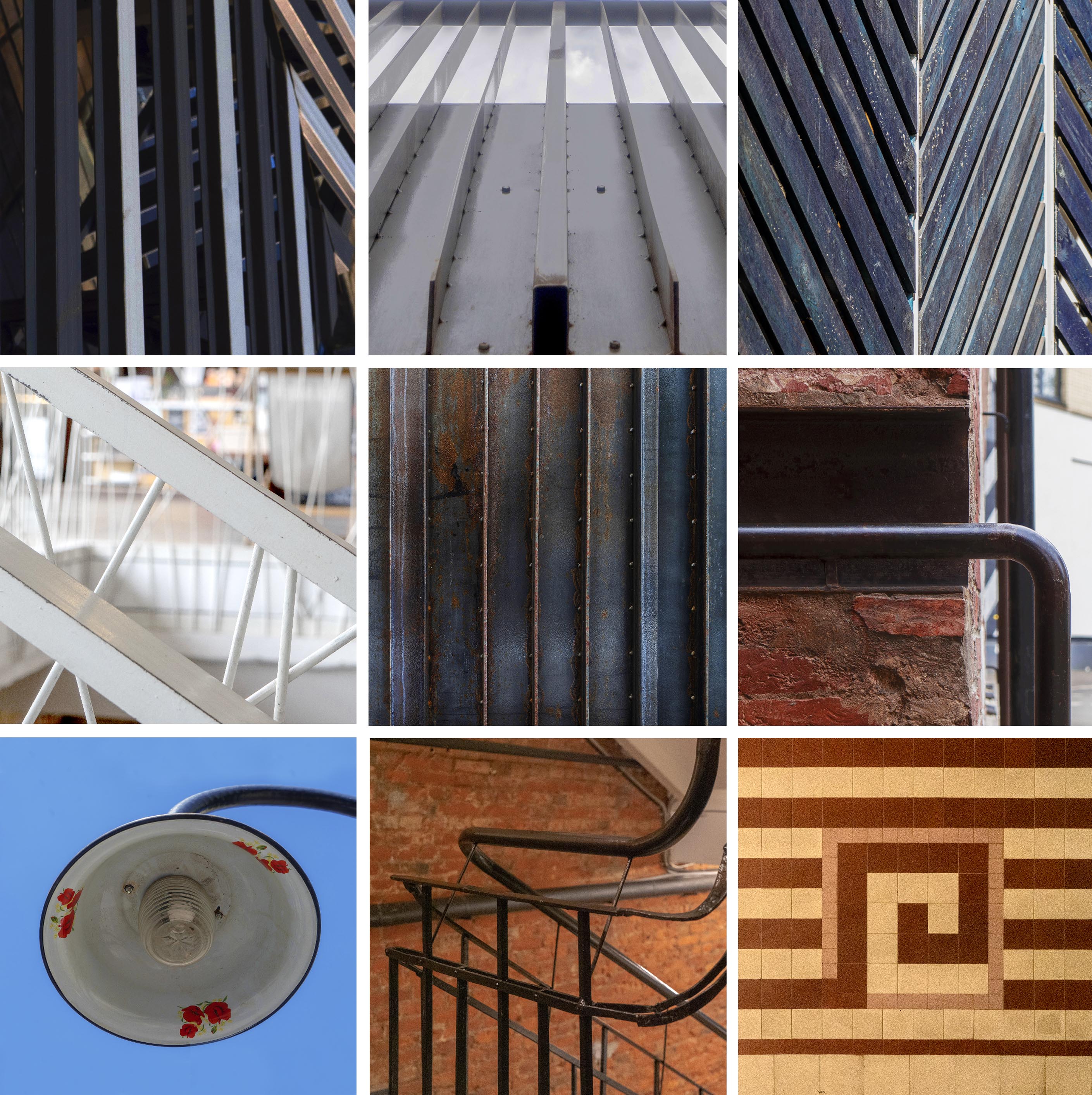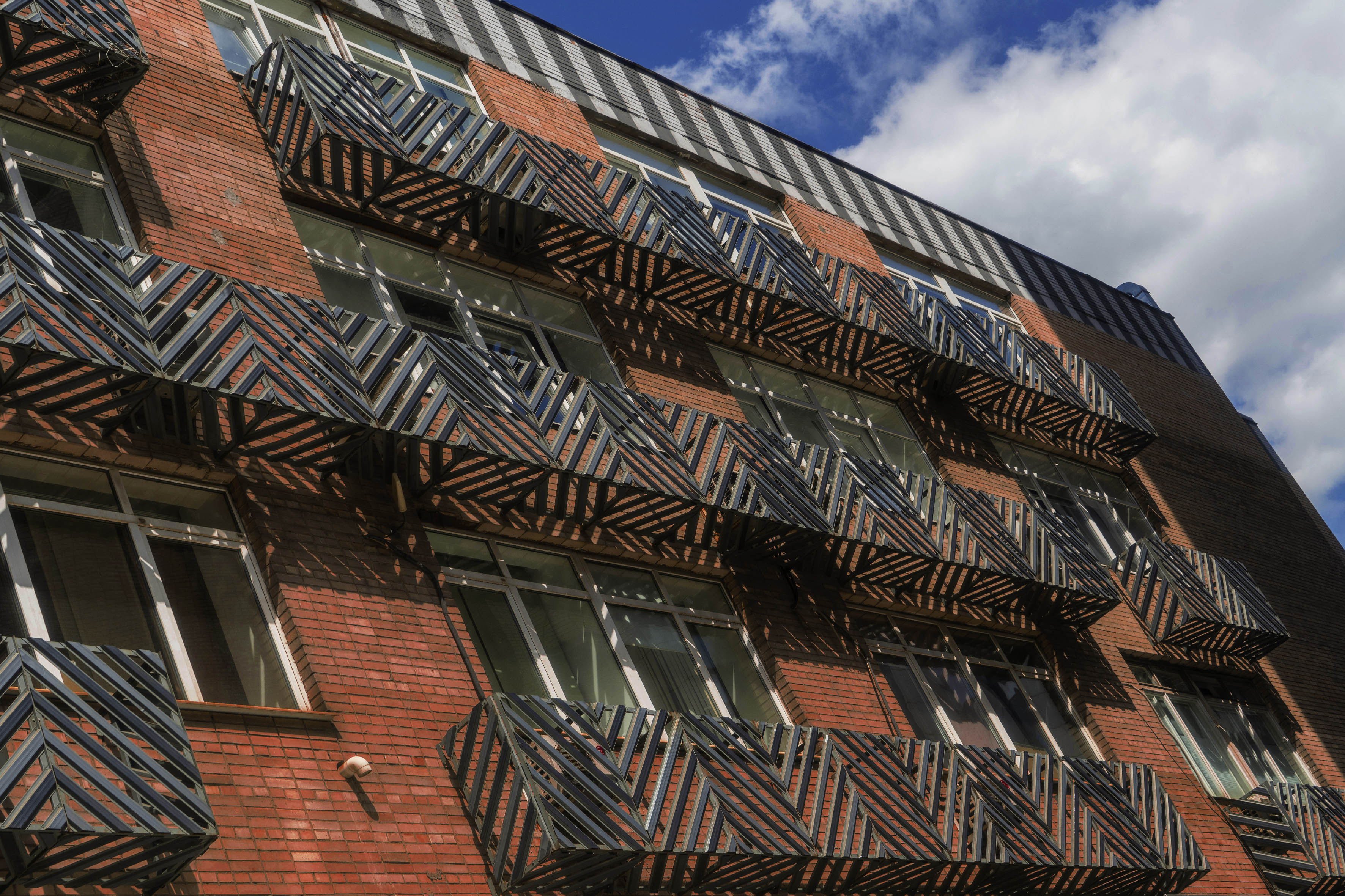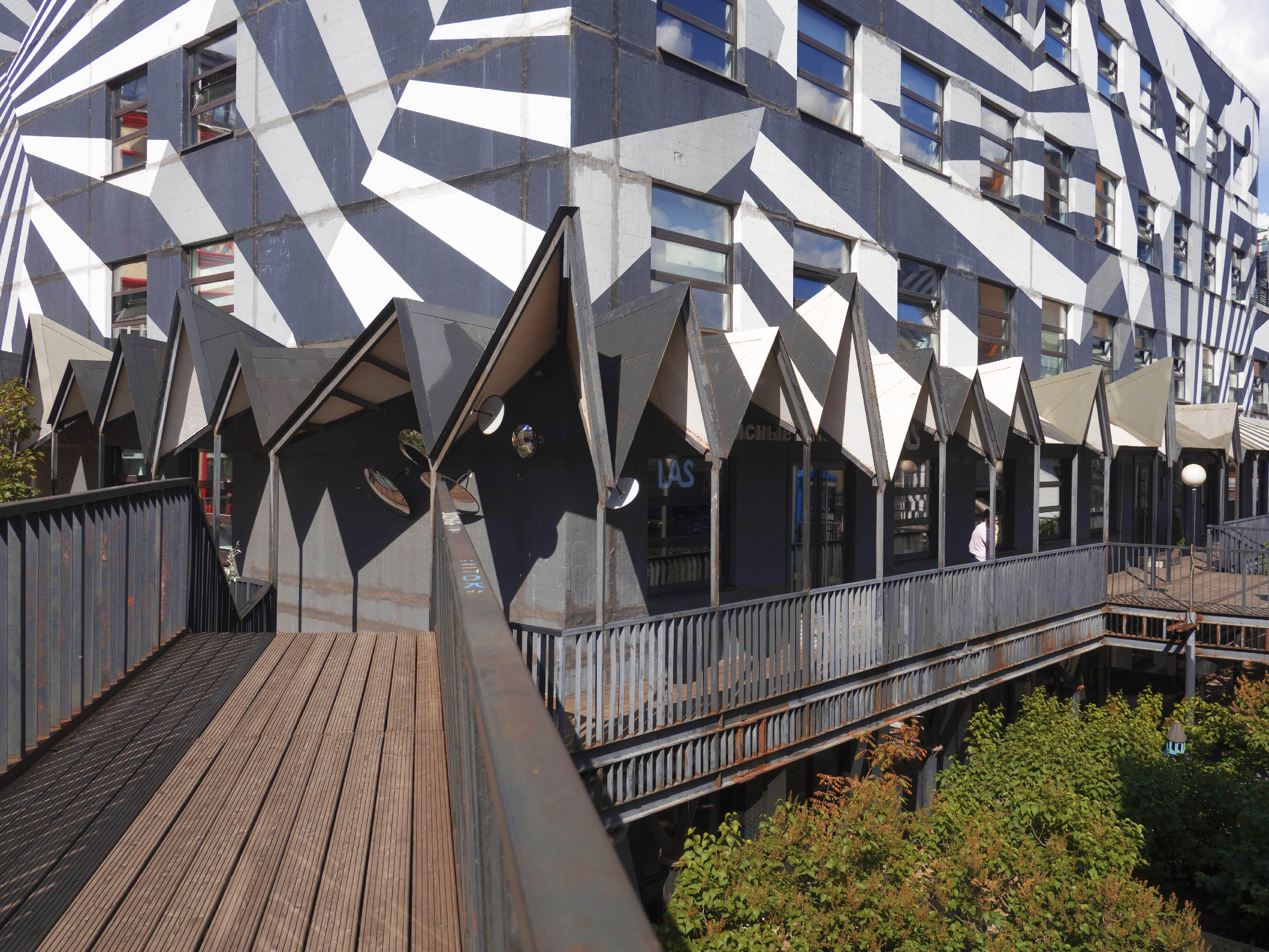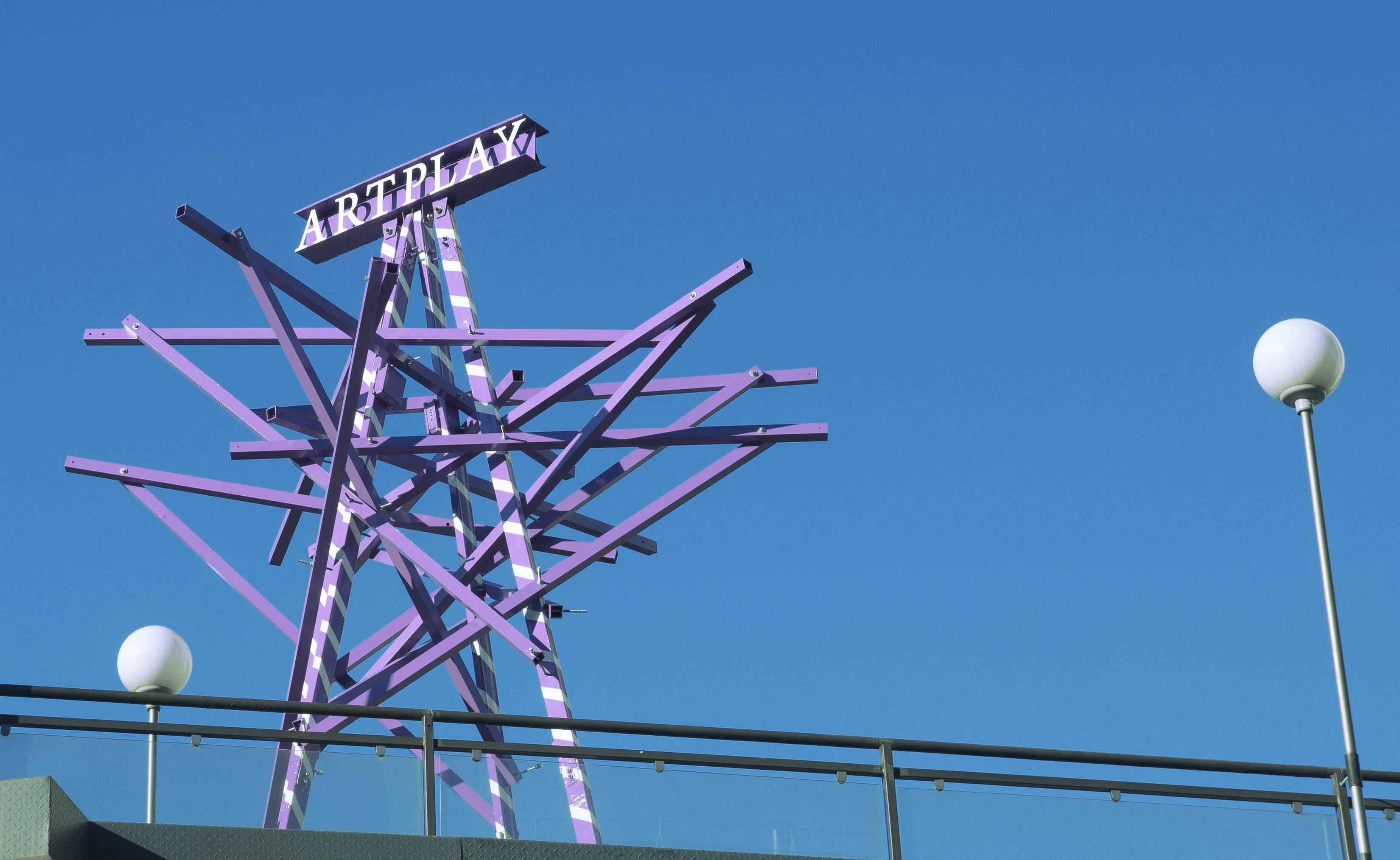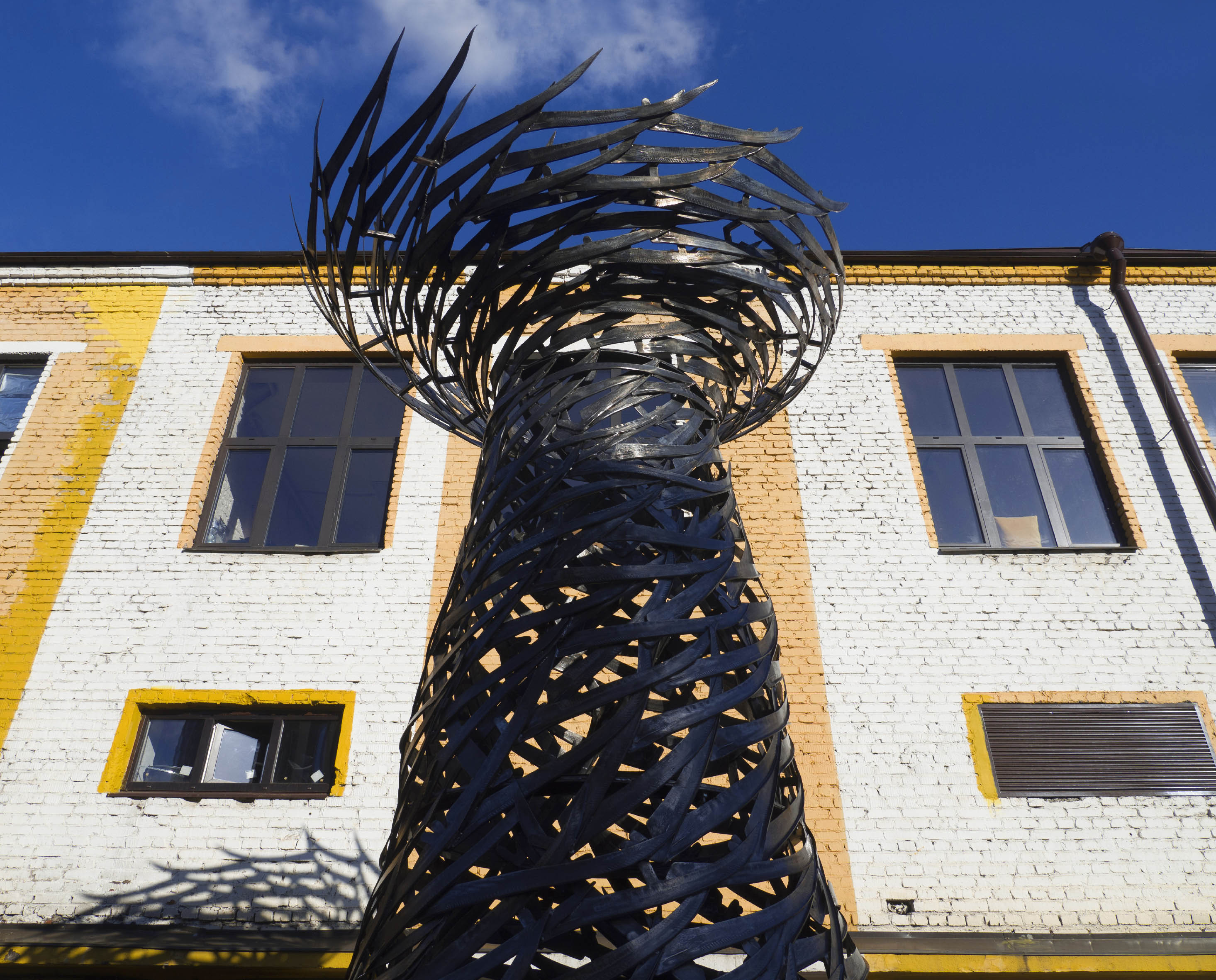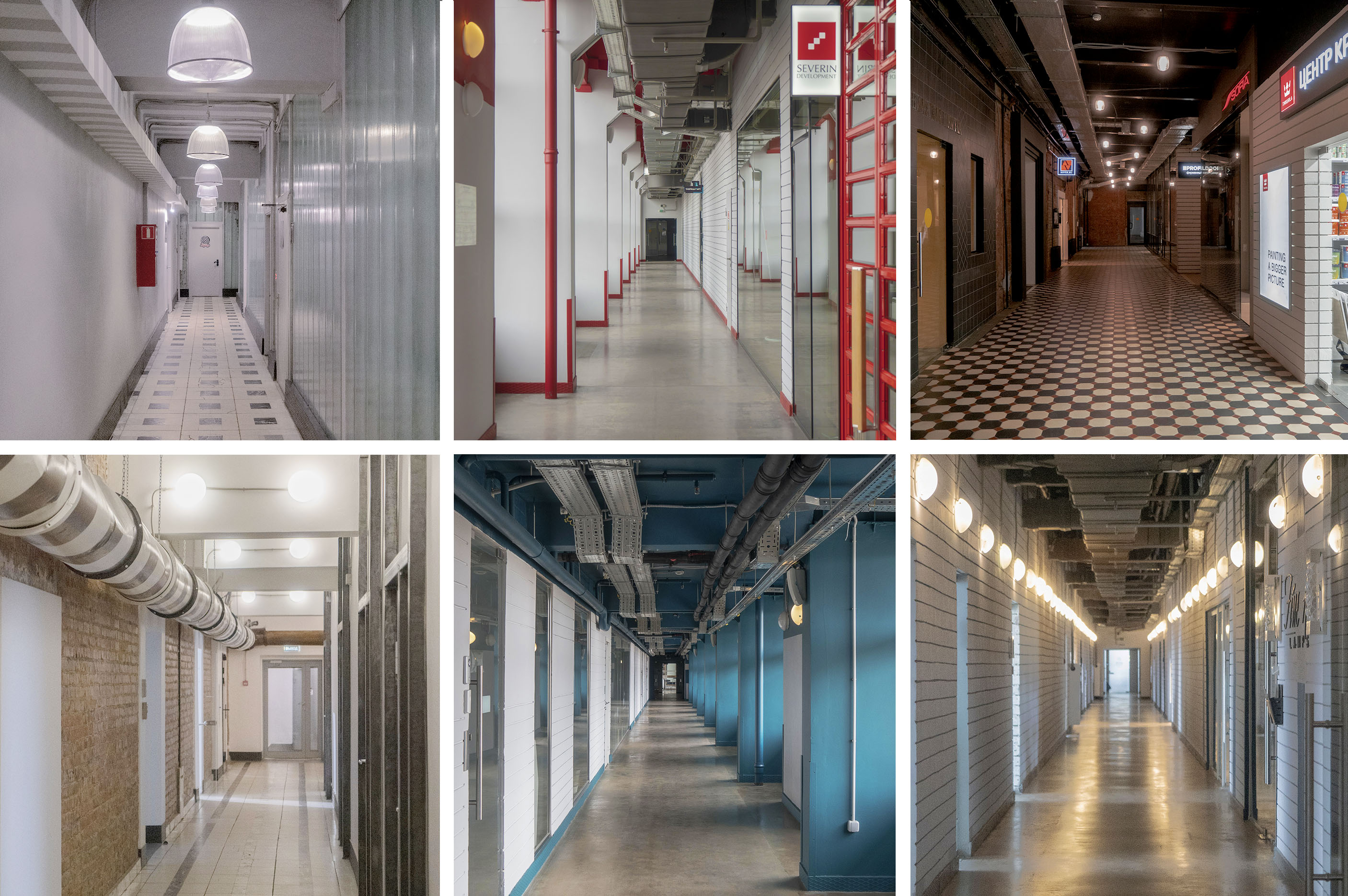The valves and manometer factory of Fyodor Gackenhtal appeared on this territory in 1870. After the revolution of 1917, the factory was nationalized and renamed to "Manometr" factory. In 2008 it was relocated to Engels (city in Saratov Oblast, Russia). The territory and buildings of the former factory have been transferred then to a rental business focused mainly on design and architecture. In 2011, Mikhail Labazov was invited to the chief architect position.
Nowadays ARTPLAY district is one of the most popular locations in Moscow. There are many architectural and design bureaus, lighting and furniture showrooms, and several institutes (British Higher School of Art and Design, Moscow Architecture School (MARCH), RMA business school and others).
A complex, heterogeneous and very specific environment has been developed on the territory for more than a century of the plant's history. Structurally, the territory consisted of a lot of very different fragments, braided with technological communications. The preservation and amplification of this individuality was one of the main goals of the reconstruction concept.
The reconstruction was carried out within the existing dimensions of the buildings. However, even in those conditions, the rentable area has been increased by 17%.
The reconstruction process was distinguished by an individual approach to each plot to improve its identity. There are no two similar corridors, every place has its own face. That helps to navigate the area and makes it more spacious. Like in the factory times, the whole territory is braided with a network of overground paths connecting buildings and different locations, but now they are made for pedestrians, not only for heat, water and electric supply lines.
The limited construction budget was another feature of this project. In fact, all the work was done as part of the ongoing maintenance. Many tasks were solved with very simple and cheap but artistically applied solutions (like lamps made of enameled basins).
There were a lot of various artists and designers involved in the work on the territory during this time. Several architectural and art competitions were held. We also kept a lot of factory artifacts. Now the territory has become a kind of open air museum with many exhibits: graffiti, sculptures, and various art and heritage objects.

